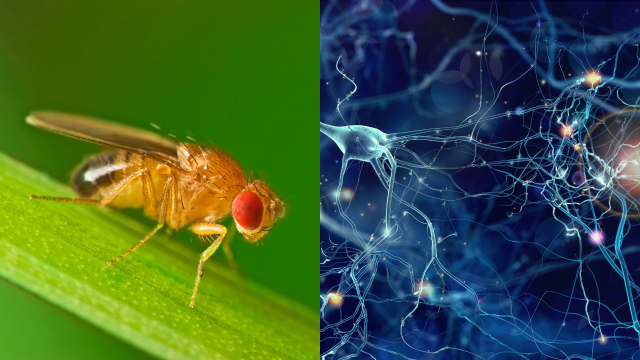Aussie researchers at the Australian National University, the University of Melbourne and the Walter and Eliza Hall Institute of Medical Research (WEHI) have decoded a genetic link to Alzheimer’s disease using fruit flies. Yup.
Alzheimer’s disease involves the genetic destruction of your memory and mental functions. It’s often associated with poor memory and not being able to immediately remember people, places or things, and eventually leads to the inability to do the simplest of tasks. There’s no cure, but treatment options exist.
But that doesn’t mean researchers aren’t looking into it and trying to learn as much as possible about the disease, with the hope of one day curing it. Just now, a team of Australian researchers have identified a genetic link to the disease using fruit flies.
“Currently, we don’t have good treatments for Alzheimer’s and we urgently need new options,” lead researcher Doctor Agalya Periasamy said.
“Our research offers a possible alternative avenue for development of much-needed therapeutic interventions for this devastating disease.”
The team used a fruit fly model to explore connections between TOMM40 gene levels and Alzheimer’s. Fruit flies have an abundance of Tom40, which is created from the TOMM40 protein, in their eyes.
This gene is notably separate from the ‘Alzheimer’s gene’ (ApoE4), which is the strongest genetic indicator of late onset Alzheimer’s disease. It’s been hard to separate TOMM40 from ApoE4 up until now, with its own unique links to Alzheimer’s realised, such as brain shrinkage.
This link between fruit flies, high levels of TOMM40 and Alzheimer’s disease isn’t particularly new, however, this new research helps explain the link between the gene that produces TOMM40 and neurodegeneration.
The team has picked up a new understanding of how the TOMM40 gene leads to the death of neurons and “previously unexplored avenues for the development of new therapies”.
“We looked at the eyes of fly larvae under the microscope and found an increase in a protein that marks the activation of apoptosis, called ‘caspase-3’ in humans. This confirmed to us that apoptosis was the missing link we were looking for,” added Periasamy.
“If we can unpack this, we might be able to find a new way to intervene with the process to prevent neurons from dying,”
The research has potentially opened the door for cognitive disorder treatments.
You can read about Alzheimer’s, fruit flies and how they’re linked on the WEHI website, or the paper in Scientific Reports.
